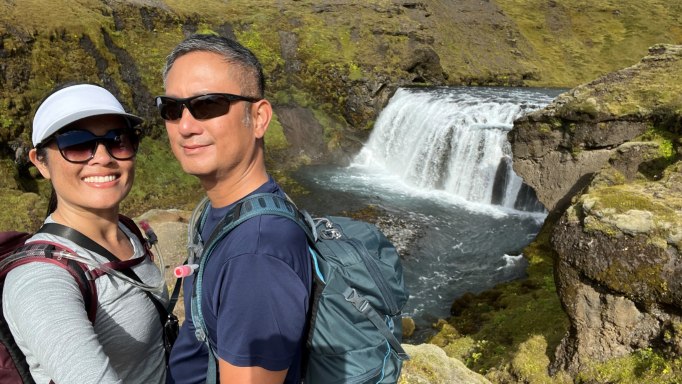
Written by Laura Roe Stevens
Brian Miura, MD, knows a thing or two about present-moment awareness. In fact, as an emergency medicine physician for the past 25 years who also serves as one of the medical directors for the Torrance Memorial Emergency Department and urgent care centers, he says the heightened focus needed for emergency medicine is what he enjoys most about the field.
“Every patient is a new experience and opportunity to help someone in need. In a short period of time, we need to gain their trust, investigate their symptoms and develop a list of possible diagnoses. It’s nice to be the investigator, or sleuth, who is trying to figure out the cause of their symptoms and then do the appropriate workup,” Dr. Miura explains. “And once we’ve made a diagnosis, we can initiate the appropriate treatment and decide whether they can go home or need to be admitted.”
While each patient’s case is unique, requiring full attention by physicians and staff, Torrance Memorial Medical Center’s Emergency Department (ED) and its three urgent care centers (in Manhattan Beach, Torrance and now El Segundo) are treating more patients this year. The recent uptick means expanded multitasking for staff.

“To put it into perspective, currently we’re seeing 8,000 patients in the ED and 2,800 patients in the urgent care centers each month,” he reports. “That’s 130,000 patients annually who are seeking acute medical care.”
Dr. Miura estimates some of the rises in urgent care patients are due to COVID-19, back-to-school colds and other flu-like illnesses. Another reason for the surge in ED and urgent care patients is people recognize Torrance Memorial as the premiere hospital in the South Bay. Patients share stories of traveling farther and past other hospitals and urgent care centers to be treated by his staff.
Striking A Balance
Juggling multiple patients with various health issues in a busy emergency department is a skill well-honed by Torrance Memorial ED staff and physicians. “Going into the field of emergency medicine, we understood this dynamic. One of the nice things about our specialty is we work nine- or 10-hour shifts, but not 20 to 22 days a month, like most 9-to-5 workers,” explains Dr. Miura.
Emergency medicine physicians typically work about three shifts a week or 12 to 14 shifts a month. This allows sufficient time off to decompress, reduce stress and find more balance. “When we come to work in the ED, it’s usually extremely busy,” he says.
To let off steam on days away from the hospital, Dr. Miura likes to exercise—although his interests have changed since the judo days of his youth. “Now that I’m older, my body can’t handle being thrown around in judo,” he says with a laugh. Instead, he prefers road cycling, snowboarding and golf (even though he claims not to be good at it).
Dr. Miura also loves to travel. He and his partner, Brandy Van Zitter, a cardiovascular ICU nurse at Torrance Memorial, recently explored Iceland. “We just got back from an amazing two-week trip to Iceland. Unfortunately, we did not see the Northern Lights, but we drove around the entire country, hiked to dozens of waterfalls and on several glaciers, and kayaked around icebergs. It was spectacular scenery.”
YPPA & Our Future
In addition to fitness and travel, Dr. Miura likes to volunteer and has been an active member of the Torrance Memorial Young Physicians and Professionals Alliance (YPPA) program since its inception 10 years ago. Involvement with YPPA is the opportunity to bring physicians and business leaders together to have fun, network and discuss ways to better our communities.
In 2023, fundraising efforts will align with the Torrance Memorial Foundation to focus on the ED expansion project. This expansion is anticipated to open in 2026 and is considered critical by ED staff.
“The ED is undergoing plans to build a second story where the old intensive care unit used to be,” explains Dr. Miura. “In those plans, there will likely be some remodeling of the first floor as well, to give us an additional 16,000 square feet of space. We need more space to handle the anticipated continued growth of our ED population.”
You could say this mindset of concentrating on the present moment—which is constantly changing—is a way of life for Dr. Miura. Whether working in the ED, meeting with local leaders, keeping up with fitness goals or prioritizing time for family and travel, he always takes a mindful approach. •






